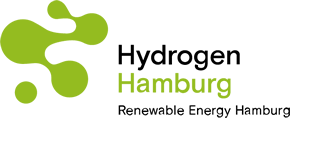Hamburg as a European model region
Location Advantages
The Free and Hanseatic City of Hamburg has the largest German seaport, which forms the largest contiguous industrial area in Europe. In addition to the maritime sector, the city owes its importance and prosperity to other key industries – such as the modern aviation industry, but also the basic and raw materials industry, which produces steel, copper and aluminium. In the face of climate change, the city needs to become cleaner and more sustainable – this has been laid down in its climate protection plan. Implementation is ensured by the Hamburg Climate Protection Act, which currently aims to achieve climate neutrality by 2050. It is currently being revised to comply with the federal government's climate protection amendment, which specifies higher targets by 2030 and greenhouse gas neutrality by 2045. The hydrogen economy in the Hamburg metropolitan region will create new jobs and offers German companies the opportunity to position themselves globally with technological leadership. Despite the economic opportunities, it is not an end in itself, but instead a necessary step to achieve comprehensive decarbonisation in line with federal and EU targets – to ensure that Hamburg's economy is strongly positioned for the post-carbon era and secure the region’s existence.
Hydrogen economy in Hamburg
The Free and Hanseatic City of Hamburg has the largest German seaport, which forms the largest contiguous industrial area in Europe. In addition to the maritime sector, the city owes its importance and prosperity to other key industries – such as the modern aviation industry, but also the basic and raw materials industry producing steel, copper and aluminium. Facing climate change Hamburg needs to become cleaner and more sustainable. The Hamburg Climate Protection Act aims to achieve climate neutrality by 2050. It is currently being revised to comply with the federal government's climate protection amendment, which specifies higher targets by 2030 and greenhouse gas neutrality by 2045. The hydrogen economy in the Hamburg metropolitan region is supposed to make a big contribution to that goal; moreover it will create new jobs and offers German companies the opportunity to position themselves globally with technological leadership. This is a necessary step to achieve comprehensive decarbonisation in line with federal and EU targets to ensure that Hamburg's economy is strongly positioned for the post-carbon era.
Favourable circumstances
To date, “grey“ and “blue“ hydrogen has been produced almost entirely from natural gas. In Hamburg, however, it can be produced climate-neutrally as green hydrogen via electrolysis using green electricity from the neighbouring federal states and the North Sea. Thanks to its geographical proximity, the required energy can reach Hamburg in a way that is favourable for the system, i.e. without major transportation losses and extensive pipeline construction. The hydrogen can in return be easily delivered to local consumers. This extensive, high-density producer and consumer structure for green hydrogen is a great advantage in Northern Germany.
Hydrogen ecosystem along the value chain
With both an oversupply of green electricity from the north and dynamically growing needs of local industry, inner-city production capacities for green hydrogen are already projected. The site of the former Moorburg coal-fired power plant in the port of Hamburg is ideal for the construction of an electrolyser. Not only is its location extremely favourable for the project – the existing infrastructure with a 380 kV connection to the transmission grid also offers optimal production conditions. Branching out from this nucleus of the local hydrogen economy, the urban hydrogen grid is already being planned, and will be able to transport and store the gas. On the user side, additional applications in the industry, transport and heating sectors are already in development.

Hub for green hydrogen imports
Despite the favourable forecasts, the on-site production of hydrogen will only be able to meet part of the local demand. The existing demand from Hamburg's industry is expected to double by 2030. The import of hydrogen will therefore be essential. The existing port infrastructure satisfies the prerequisites for this and the 2022 import strategy marks the way for the landing of hydrogen and its derivatives by ship. In addition, new supra-regional projects by the transmission system operators provide the prospect of possible connections to the European hydrogen grid (“European Hydrogen Backbone“). In the long run, it will span the industrial centres of northern Germany and as far as the Netherlands and Scandinavia.


